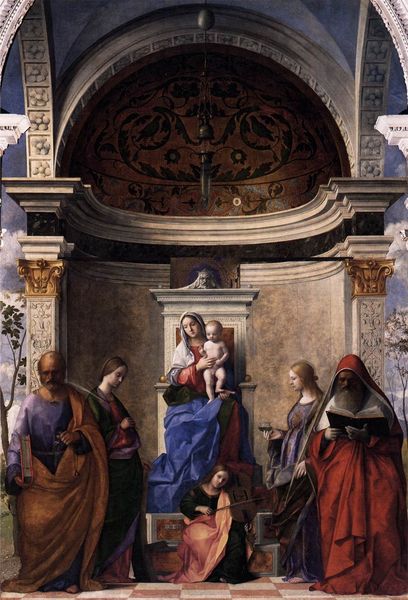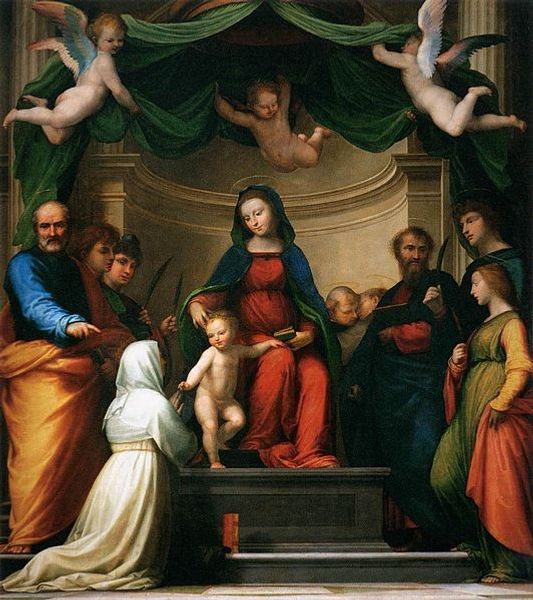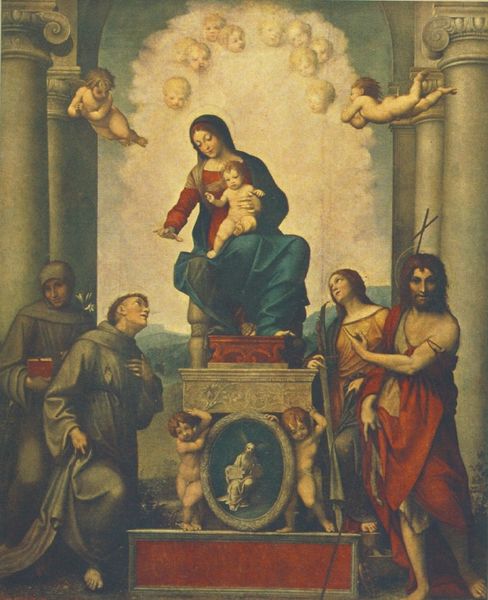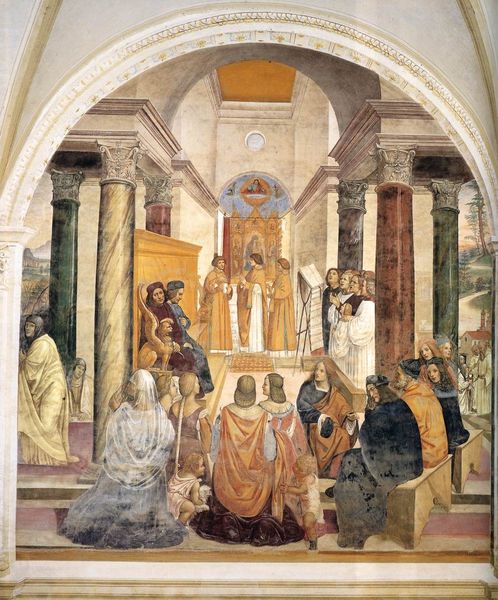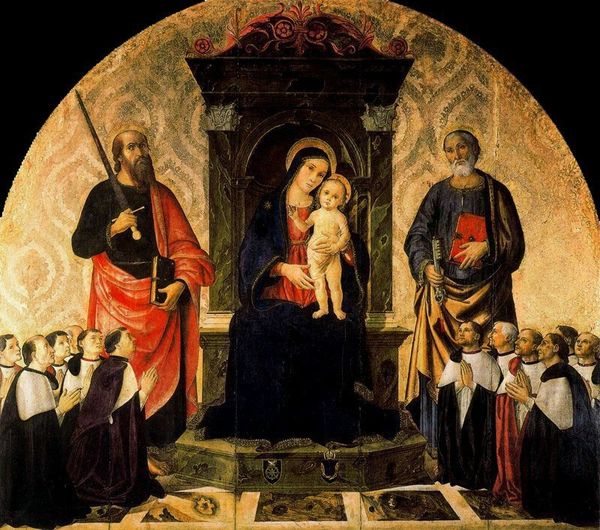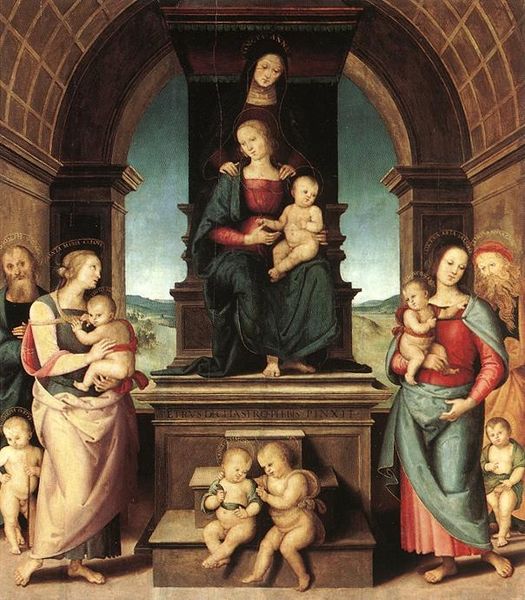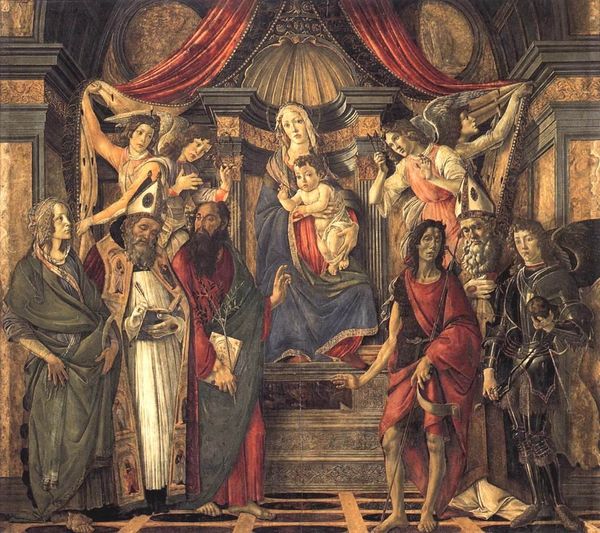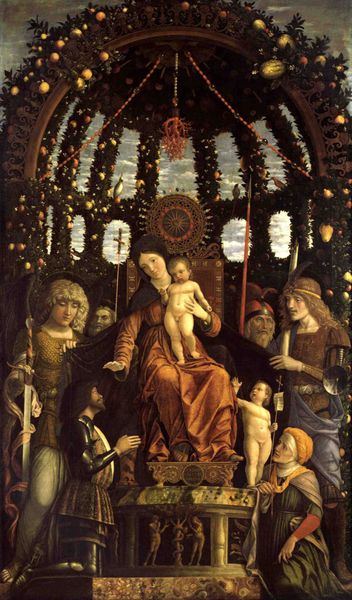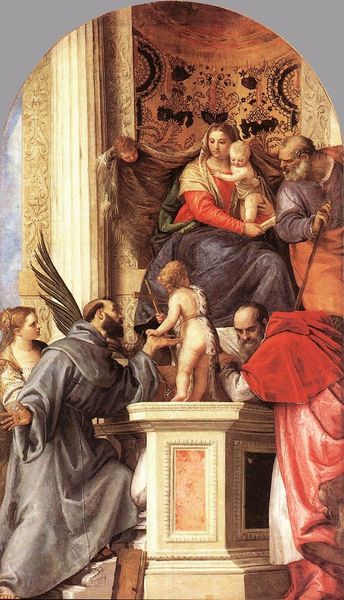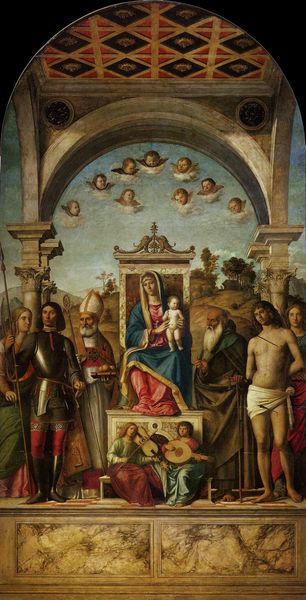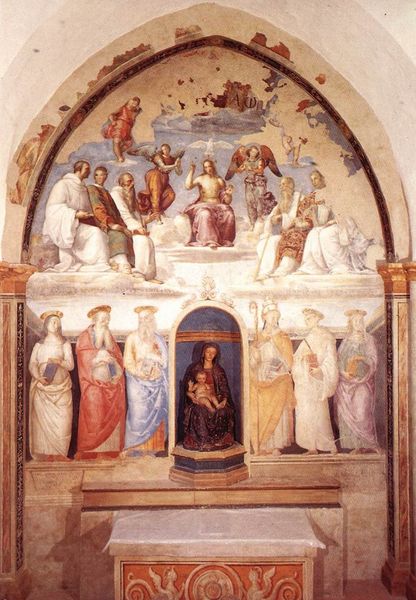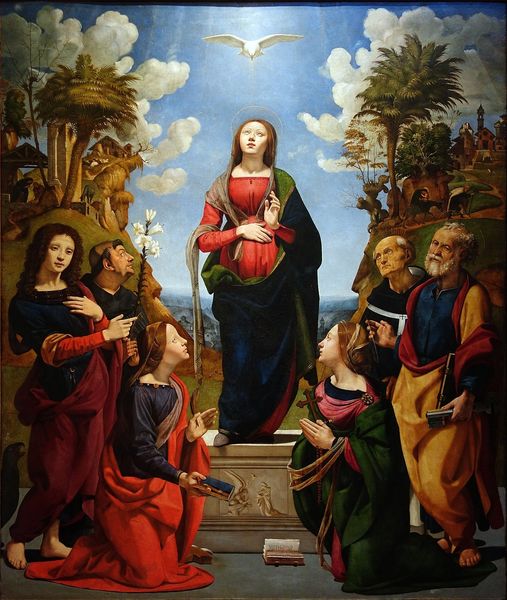
painting, oil-paint
#
portrait
#
painting
#
oil-paint
#
figuration
#
oil painting
#
child
#
christianity
#
italian-renaissance
#
christ
Copyright: Public domain
Curator: I find myself drawn to the 'Madonna Enthroned with the Child.' a painting that resides here at the Parma National Gallery, created by Cima da Conegliano during the Italian Renaissance. Editor: Ah, immediately, I see this image and I'm struck by its calm formality. The scene feels incredibly balanced and poised, as if frozen in a beautiful moment of contemplation. It’s visually serene, a world onto itself. Curator: Yes, that serenity arises from the precise geometry and considered placement of figures that are so characteristic of the era, reflecting a search for balance. The Madonna is, of course, central to understanding the art as an ideal form. Note how it brings together a sense of maternal warmth with religious authority. Editor: Exactly. But I’m really curious about what's happening with that mosaic at the very top – does it serve a specific symbolic purpose, anchoring the scene with further layers of significance? The choice feels almost jarring, an older style juxtaposed with the figures in the foreground. Curator: Good eye. That mosaic alludes to earlier Byzantine traditions and highlights the Virgin’s role as the bridge between the Old and New Testaments. Conegliano places her between two epochs and suggests continuity. She is holding a small, not quite human looking christ that appears too formal for maternal engagement. Editor: Continuity... like the ripples in a pond, from ancient artistic wells to the dawn of the Renaissance! And, for me, those faces, especially the figures surrounding the Madonna, hold such individualized humanity; is Conegliano moving us toward a recognition of each person’s divine spark? Curator: Certainly. The subtle individualisation also speaks to the emerging importance of personal identity during that era, which departs significantly from the faceless forms you might find centuries earlier. This work blends a clear emotional dimension and artistic evolution. Editor: The blend intrigues. To really get it you almost need to meditate between these past, Byzantine echoes and this blooming Renaissance optimism, right? Finding the perfect balance between eras— that's quite the invitation for our minds. Curator: I completely agree. There's a beautiful synthesis, I think, here, leaving us with layers of understanding about art history and faith. Editor: Absolutely. A testament, truly, to both the artist's hand and our own searching eyes.
Comments
No comments
Be the first to comment and join the conversation on the ultimate creative platform.
